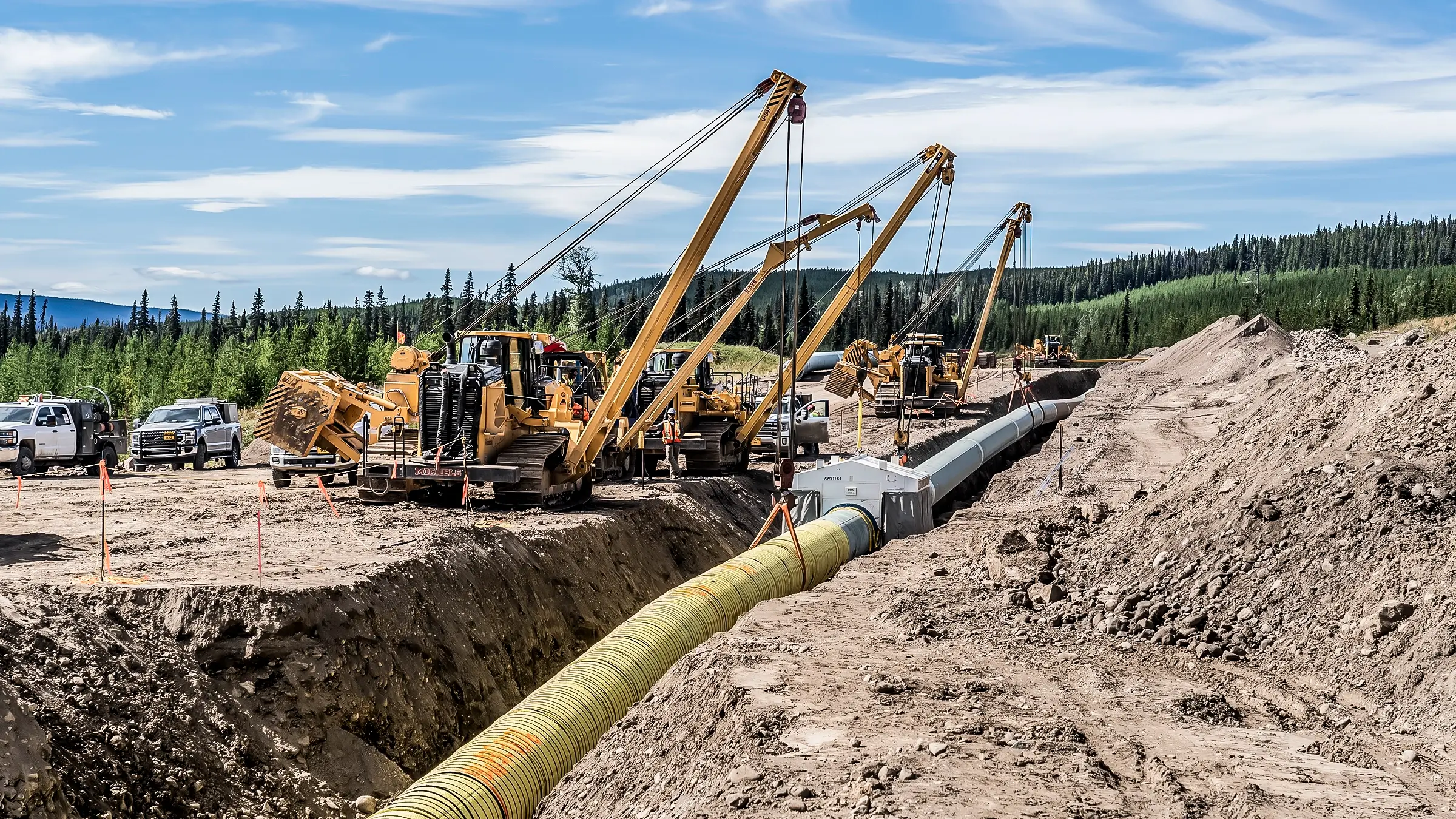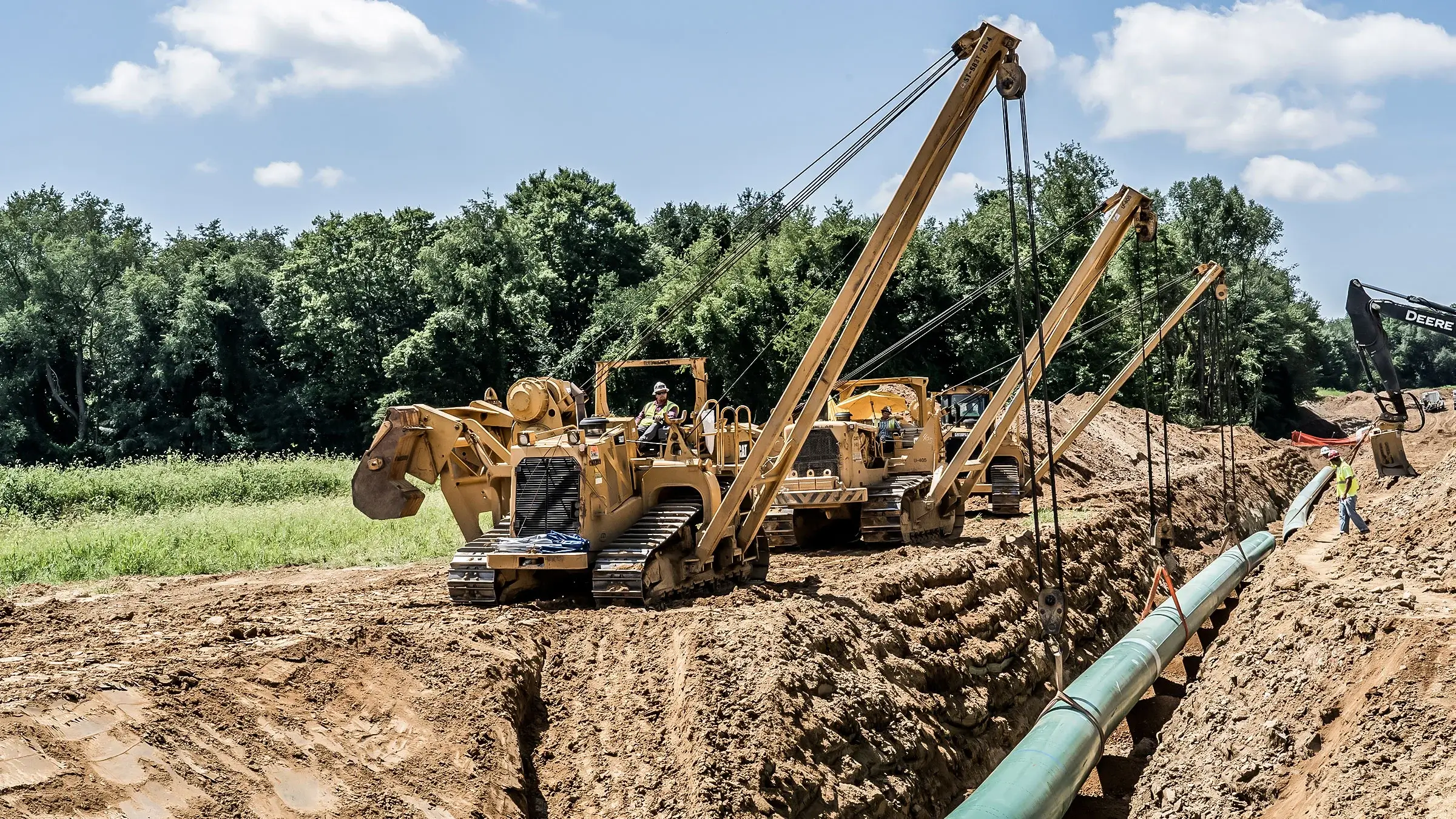Top 5 Costly Mistakes in Pipe Installations With Creek Pipe Company
Wiki Article
What You Ought To Understand About Pipe Trenching Providers: A Detailed Summary of Available Options
Pipe trenching solutions are vital for the setup and maintenance of below ground utilities. They entail different techniques customized to certain requirements and settings. Understanding these techniques is essential for effective job implementation. Each option provides its own collection of benefits and obstacles. As the demand for efficient utility management boosts, recognizing what to consider when choosing a trenching solution ends up being crucial. What factors should one prioritize to assure success?Comprehending Pipe Trenching: What It Is and Why It Issues
Frequently overlooked, pipe trenching is an essential procedure in different building and energy projects. This technique involves digging deep into narrow trenches to help with the installation of pipelines for water, gas, sewage, and telecommunications. The importance of pipeline trenching hinges on its duty in ensuring that these important systems are correctly incorporated into infrastructure, making it possible for the risk-free and efficient delivery of necessary services.Proper trenching is important for preserving the honesty of pipelines and minimizing dangers connected with soil erosion and cave-ins. It also permits reliable evaluations and maintenance of underground energies. In addition, understanding the regional guidelines and environmental factors to consider is essential, as improper trenching can cause pricey delays and legal issues. Ultimately, pipe trenching acts as the fundamental action that sustains different building and construction ventures, making it a substantial element of modern infrastructure development.
Typical Trenching Methods for Underground Energies
In the domain of underground energies, numerous trenching techniques play a vital duty in setup and maintenance - Creek Pipe HDPE installation. The open-cut trenching technique, directional monotonous technique, and hydro excavation procedure each offer distinct advantages depending upon the certain task requirements. Comprehending these approaches is crucial for reliable and effective utility administrationOpen-Cut Trenching Approach
Open-cut trenching is an extensively made use of method for installing underground energies, particularly when the depth and width of the trench enable efficient accessibility. This strategy includes excavating a trench along the proposed path of the energy, providing direct presence and access for setup. It is specifically beneficial for projects that call for extensive excavation, as it facilitates fast setup and evaluation. It also requires mindful preparation to reduce interruption to the surrounding location, consisting of traffic and existing frameworks. Open-cut trenching is most effective in open rooms where the soil conditions agree with, but it might be restricted in city atmospheres as a result of the existence of existing energies and various other underground challenges.Directional Boring Strategy

Hydro Excavation Process
Exactly how does hydro excavation stand apart among usual trenching methods for underground energies? Hydro excavation uses high-pressure water and vacuum cleaner innovation to safely eliminate soil, enabling precise excavating around sensitive below ground utilities. This approach lessens the risk of destructive existing facilities compared to typical mechanical excavation. By using water to loosen up the soil, hydro excavation gives a less invasive method, reducing the capacity for soil compaction and ensuring a cleaner worksite. Additionally, the process improves presence throughout excavation, enhancing overall precision and performance. Hydro excavation is especially advantageous in metropolitan locations where energy lines are largely loaded, making it a preferred selection for contractors concentrated on safety and security and precision in underground tasks.Advantages of Trenching Solutions
While numerous approaches exist for installing underground utilities, trenching services use distinct advantages that make them a favored selection for numerous jobs. One considerable benefit is the cost-effectiveness of trenching, as it normally calls for less specialized devices compared to options like hydro excavation. This often leads to lower labor and operational prices. Furthermore, trenching can fit a vast array of energy kinds, including water, sewage system, and gas lines, providing convenience for contractors.Moreover, trenching permits effective access to several lines in a solitary excavation, reducing interruption to the surrounding location. The procedure additionally allows accurate installation and repair work, which is essential for sticking to regulative standards click to read and making sure long-lasting reliability. Ultimately, trenching can be performed reasonably quickly, decreasing project timelines and allowing for faster solution restoration. These advantages collectively make trenching services a useful alternative for lots of below ground energy projects.Drawbacks and Difficulties of Trenching
Regardless of the various advantages of trenching services, there are notable drawbacks and obstacles that need to be taken into consideration. One substantial obstacle is the possibility for soil instability, which can lead to cave-ins, positioning threats to workers and equipment. In addition, trenching can disrupt existing energy lines, necessitating cautious planning and control to avoid service disruptions. The process can likewise be taxing, especially in metropolitan locations where space is minimal and gain access to is restricted. Trenching might call for extensive permits and regulatory conformity, including intricacy and potential delays to jobs. Environmental issues, such as soil erosion and damage to local environments, can occur from incorrect trenching techniques. The expenses associated with trenching, including labor and equipment, can escalate if unexpected concerns occur during the job, making it crucial for stakeholders to consider these difficulties versus the advantages when taking into consideration trenching solutions.Trick Aspects to Consider When Selecting a Trenching Solution
Picking the best trenching service can considerably impact the success of a task. A number of essential elements should be analyzed to ensure an ideal choice. The firm's experience and competence in trenching operations are crucial; a reputable service with a solid track record is generally much more dependable. Next off, examining the devices utilized is basic, as modern-day machinery can improve effectiveness and accuracy. In addition, it is significant to consider the variety of services offered, including excavation deepness and soil kind handling, to confirm they satisfy specific job requirements.Another variable to evaluation is the business's credibility; customer testimonials and testimonies can give understandings into previous performance. Obtaining thorough quotes that outline costs and timelines will help in spending plan administration. Lastly, confirming conformity with regional laws and sector standards is essential for staying clear of potential legal issues. By reviewing these variables, customers can make an educated decision when picking a trenching service.Precaution in Pipe Trenching
In pipeline trenching, safety and security measures are critical to making certain worker defense and website stability. Key components consist of the usage of individual safety tools, detailed excavation website assessments, and distinct emergency situation response protocols. Implementing these actions considerably decreases dangers related to trenching procedures.Personal Protective Tools
Safety and security in pipe trenching greatly counts on the appropriate use individual protective tools (PPE) Workers should use construction hats to protect against dropping things, in addition to high-visibility vests to enhance their visibility on-site. Steel-toed boots are crucial for foot protection versus hefty tools and products. Additionally, handwear covers are necessary for hand security, specifically when dealing with harsh or sharp objects. Respirators might likewise be required in settings with dirt or harmful fumes. Eye protection, such as security goggles, ought to be used to shield versus particles. Hearing protection is necessary in loud work Read Full Article atmospheres. By sticking to PPE guidelines, employees can substantially minimize the danger of injury and guarantee a safer trenching operation.Excavation Website Inspection
Effectively evaluating the excavation site is a basic step in ensuring a risk-free pipe trenching procedure. This process involves evaluating the site for possible risks such as underground utilities, unstable soil problems, and neighboring frameworks. A detailed evaluation permits the recognition of threats that could endanger employee safety. Furthermore, confirming the soil type and wetness degrees can assist figure out ideal shoring methods to stop trench collapses. It is essential to assure that the website is free from particles and that correct signs is shown to inform workers of recurring operations. Normal evaluations throughout the job can also aid detect any type of modifications in website conditions, enabling timely changes to security measures and job methods.
Emergency Response Protocols
Emergency action methods are crucial in mitigating threats related to pipeline trenching procedures. These procedures assure that all workers are prepared to act swiftly and properly in emergency situations. Key components include regular safety and security drills, clear communication networks, and assigned fire escape. Additionally, first-aid packages and emergency situation get in touch with numbers ought to be readily available on-site. Trenching procedures should likewise include treatments for handling harmful circumstances, such as cave-ins or utility strikes. Training workers on acknowledging prospective dangers and understanding their duties during an emergency situation is essential. Maintaining an updated site safety plan can significantly improve feedback effectiveness. Overall, effective emergency preparedness fosters a safer working environment and reduces the influence of unforeseen events.Price Factors To Consider for Trenching Providers
Comprehending the economic implications of trenching solutions is vital for task preparation and budgeting. The prices connected with trenching can vary commonly based on numerous elements, consisting of job dimension, dirt kind, and depth of the trench. Labor expenses usually stand for a significant portion of the overall expenditure, as competent drivers are needed for efficient implementation. In addition, equipment service fees can add to the total budget, especially for specialized machinery.Site accessibility is one more crucial element; tough terrain may require added sources, increasing expenses. Permitting and governing conformity can also contribute to costs, especially in urban areas where policies are stringent.Lastly, unanticipated complications, such as coming across existing energies, can bring about unanticipated expenses and hold-ups. Consequently, obtaining thorough price quotes from respectable trenching company is important for exact budgeting and guaranteeing successful job completion.Regularly Asked Inquiries
How much time Does a Typical Pipe Trenching Job Take?
The period of a regular pipe trenching project varies significantly based on variables such as deepness, dirt problems, and task intricacy. Usually, it can take anywhere from a few days to numerous weeks to finish.What Tools Is Typically Utilized in Pipe Trenching?

Exist Environmental Laws for Trenching Activities?
Environmental policies for trenching activities frequently call for conformity with regional, state, and federal standards. These laws intend to minimize ecological interruption, shield water resources, and guarantee proper waste monitoring throughout excavation and installment procedures.
Can Trenching Solutions Be Combined With Other Construction Projects?
Trenching services can without a doubt be integrated with different construction jobs. By coordinating efforts, performances her response can be accomplished, decreasing disturbances while ensuring that all essential facilities job is finished in a prompt and affordable manner.
What Are Usual Soil Enters Run Into in Trenching?
Usual soil kinds come across in trenching include clay, sand, silt, and loam. Each kind offers distinct challenges, affecting excavation methods and stability, requiring mindful preparation to ensure safe and reliable trenching procedures.Report this wiki page